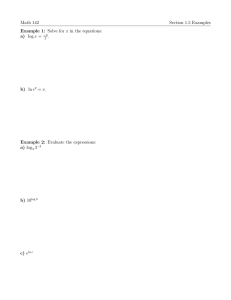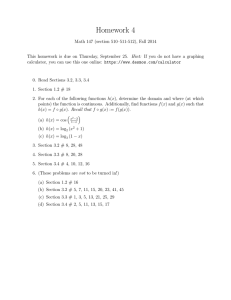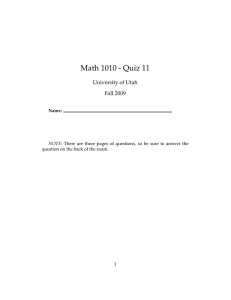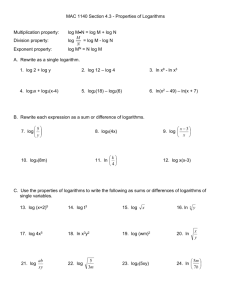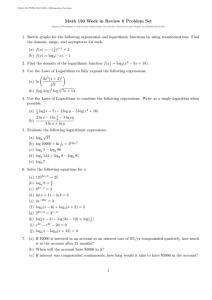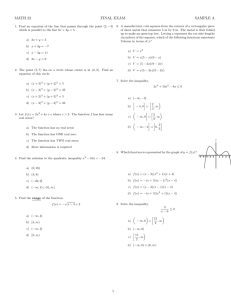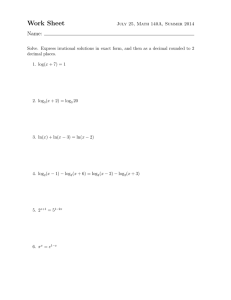MATH 1090 - SUMMER 2007 - ASSIGNMENT #6 f g
advertisement
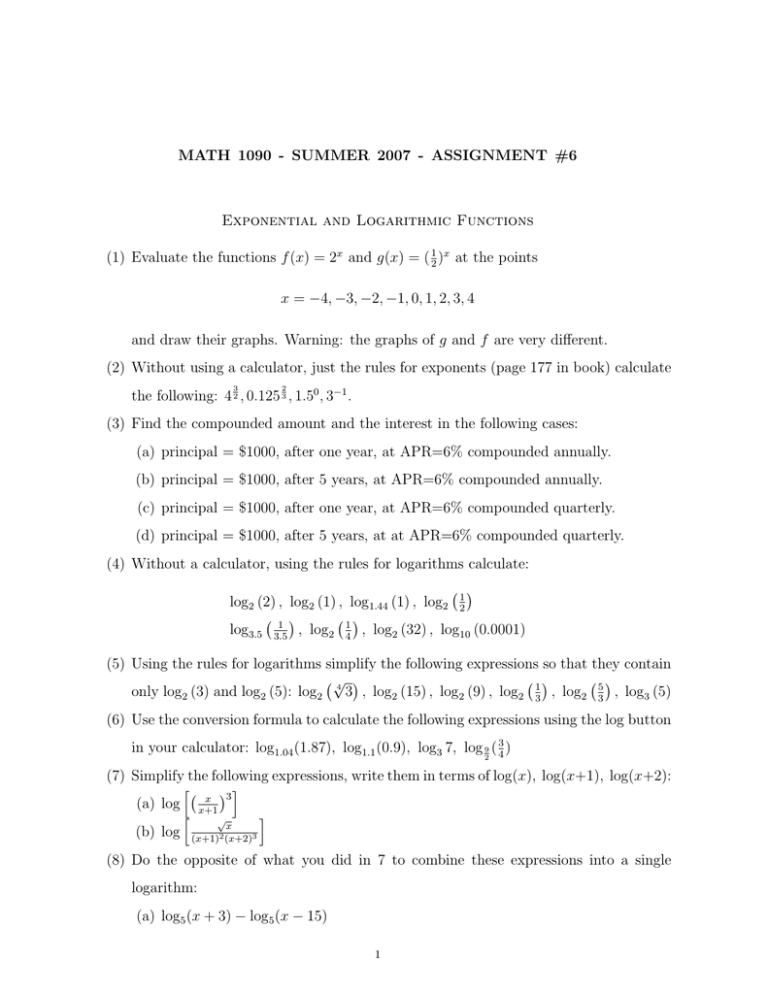
MATH 1090 - SUMMER 2007 - ASSIGNMENT #6 Exponential and Logarithmic Functions (1) Evaluate the functions f (x) = 2x and g(x) = ( 12 )x at the points x = −4, −3, −2, −1, 0, 1, 2, 3, 4 and draw their graphs. Warning: the graphs of g and f are very different. (2) Without using a calculator, just the rules for exponents (page 177 in book) calculate 3 2 the following: 4 2 , 0.125 3 , 1.50 , 3−1 . (3) Find the compounded amount and the interest in the following cases: (a) principal = $1000, after one year, at APR=6% compounded annually. (b) principal = $1000, after 5 years, at APR=6% compounded annually. (c) principal = $1000, after one year, at APR=6% compounded quarterly. (d) principal = $1000, after 5 years, at at APR=6% compounded quarterly. (4) Without a calculator, using the rules for logarithms calculate: ¡ ¢ log2 (2) , log2 (1) , log1.44 (1) , log2 12 ¡1¢ ¡ ¢ log3.5 3.5 , log2 14 , log2 (32) , log10 (0.0001) (5) Using the rules for logarithms simplify the following expressions so that they contain ¡√ ¢ ¡ ¢ ¡ ¢ only log2 (3) and log2 (5): log2 4 3 , log2 (15) , log2 (9) , log2 31 , log2 35 , log3 (5) (6) Use the conversion formula to calculate the following expressions using the log button in your calculator: log1.04 (1.87), log1.1 (0.9), log3 7, log 9 ( 34 ) 2 (7) Simplify the following expressions, write them in terms of log(x), log(x+1), log(x+2): h¡ ¢3 i x (a) log x+1 h i √ x (b) log (x+1)2 (x+2) 3 (8) Do the opposite of what you did in 7 to combine these expressions into a single logarithm: (a) log5 (x + 3) − log5 (x − 15) 1 (b) 2 log(x) − 12 log(x − 2) (9) Solve these equations using logarithms: (a) (27)2x+1 = 1 3 (b) 5(3x − 6) = 10 (10) Use the compound interest formula to solve the following problems: (a) Suppose a principal of $1000 was invested at an annual rate of 10% compounded annually. How long will it take for the compounded amount to be $2000? (b) Same as 10a only with P = $3000 and S = $6, 000 (c) Same as 10a only with P = $500 and S = $1, 000 (d) Same as 10a only with principal P and compounded amount S = 2P 2
